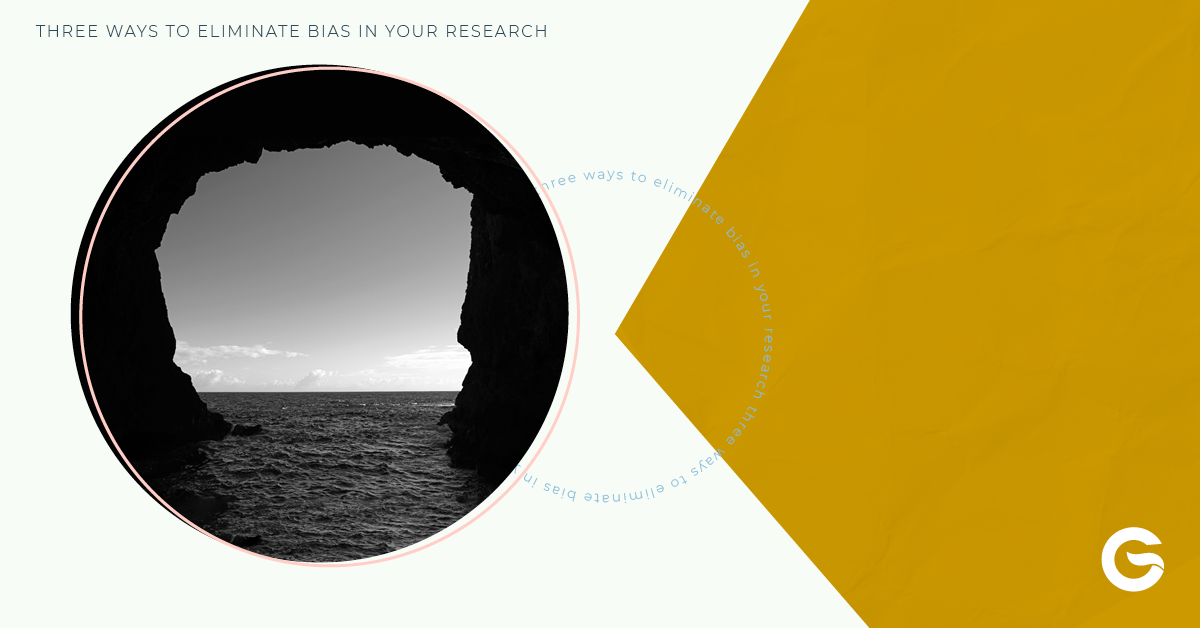Posted by Gazelle Global
Three Ways to Eliminate Bias in Your Research

Humans create research. Humans are biased. Bias awareness is the first step toward maintaining data integrity. It is from this professional understanding that researchers can work to minimize and eliminate bias from surveys. Bias can arise in many different ways in a survey. Best practices, tactics, and preventative measures within the logistics of research can be applied to minimize bias. Commitment to this data integrity creates the optimal conditions for gaining quality insights for real business impact. Take time to identify and mitigate bias in your survey by focusing on these market research considerations.
1. Order Matters
Creating a survey may seem simple, but the order in which questions are asked can create bias. This cognitive bias is called anchoring as it explains how respondents “anchor” onto artificial or influential reference points sometimes by the mere fact they are presented first. How information is distributed can inadvertently influence or cause preconceived notions. Default mechanisms, attributed to human nature, can cause respondents to form judgments or opinions on primary information received instead of actual reality.
For example, to gather insight on price points a consumer is willing to pay, starting with the lowest price will make that item appear reasonable, while higher prices may cause the product to seem too costly. While the reverse placement from highest to lowest can skew opinion to make the lowest price option a poorer quality option.
To minimize anchoring bias, try mixing up the questions and answers. Analytical techniques that ensure randomization and exposure to multiple scenarios can help avoid anchoring respondents to a specific number. Employing this simple market research solution can help ensure cognitive bias stays out of the research.
2. Perception Matters
Do you remember your last dentist appointment? Your dentist probably asked if you floss every day. Knowing that you haven't flossed in weeks, you say "yes" because flossing every day is "good behavior." You just fell victim to social desirability bias.
Social desirability bias happens when people answer questions in what they perceive as a socially acceptable manner. This behavior stems from the basic need for people to feel they are in tune with popular opinions or are politically correct.
In surveys, respondents may inflate what they perceive as socially desirable "good behavior" or under-report "bad behavior." Questions that can fall victim to social desirability bias are usually around self-reported personality traits and habits. For example, when confronted with the question, "How many alcoholic drinks do you consume each week?" respondents may feel pressure to deflate the truth and respond 1 to 2, which seems to be more socially acceptable than the reality of 4 or 5. Respondents may also try to rationalize their responses to save face "I only drink on weekends with friends."
Social desirability bias is a real problem because it prevents people from answering truthfully. Dishonest answers skew survey results affecting data and accurate business decisions. This is what researchers refer to as the “say/do gap.” One way researchers can mitigate social desirability bias is to assure anonymity. In an anonymous survey setting, respondents are assured that their answers will not be linked to them. A simple market research solution could include a message at the beginning of surveys ensuring anonymity and data confidentiality in all respondent answers. This message can increase trust, therefore, making respondents feel more comfortable sharing the truth.
3. Representative Sample
Asking the right questions to the wrong demographic or to a group of respondents who are unbalanced in their demographics can give you an improper selection of your sample group and create a bias based on non-inclusion. When research can impact large numbers of individuals or societies, that same group with a wide range of people should be a mirror representation of the sample group polled. In this way, inclusion and diversity matter and should be considered when selecting a sample. Homogeneity can lead to groupthink and lack of innovation. Best practices in recruitment strategies are essential to ensure that diverse decision-making is considered, thus minimizing biases in your sample collection efforts.
Some researchers claim that random sampling solves this under-representation of certain demographics. But, even with a random sample, it is typical that the recruiting process held some form of bias and was more attractive to specific subgroups and unattractive to others.
For example, women are more likely to complete surveys than men. You wouldn't want to receive only female feedback for a product that both genders will use, so you must set measures to make sure vital demographics are included. A veteran data collection company should know common behaviors around common populations, and you can use this knowledge to your advantage. Likewise, if a study requires feedback from migrant workers or at-risk populations, a general distrust of agencies can dramatically skew their willingness to participate, thus keeping their voice from being heard in the data.
Diversity and inclusion are not only good for our society; they are crucial in business. Competition and endless innovation mean that companies are always faced with industry disruptors. Growth means aggressively keeping a share of voice, the share of the market, and even winning over new audience segments. The lack of diversity and inclusion in sample data collection can impede business growth as it delivers impartial data simply due to fact that not all demographics are represented.
There are many market research solutions available to mitigate bias in research. Keeping these considerations at the forefront of team conversations while writing research briefs, survey questions and sample requirements helps ensure better data integrity.
Your projects are unique. From qualitative to quantitative, we can match an expert to your project to get it in the field and get insights quickly. Download the Global Market Research Bidding Prep Worksheet and complete the task at hand on time and on budget with full confidence.
Topics: Global Research Service, Research Sample



